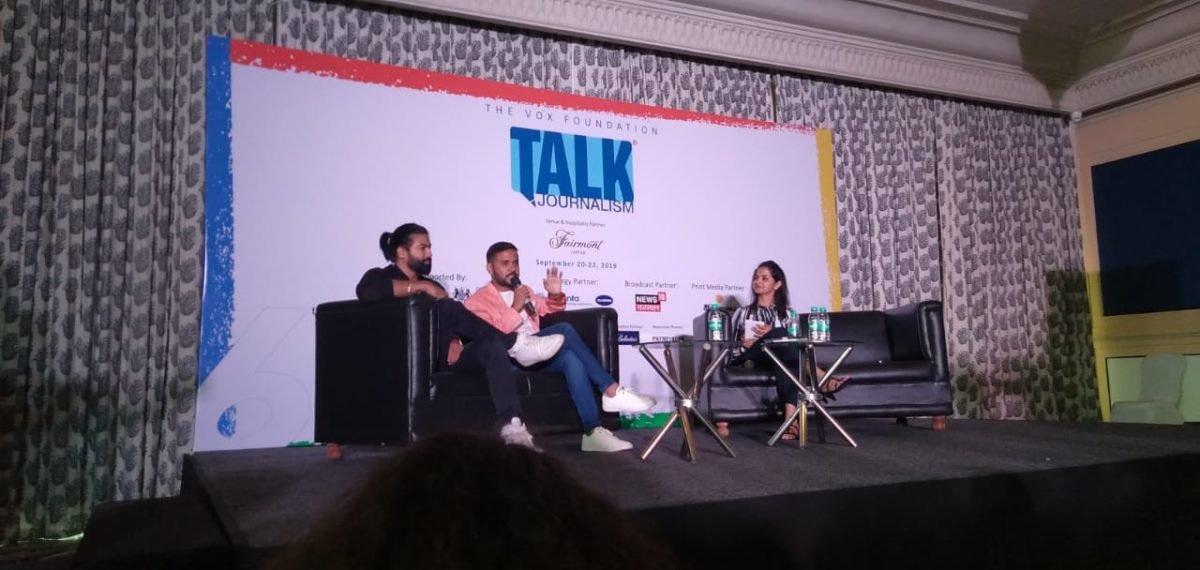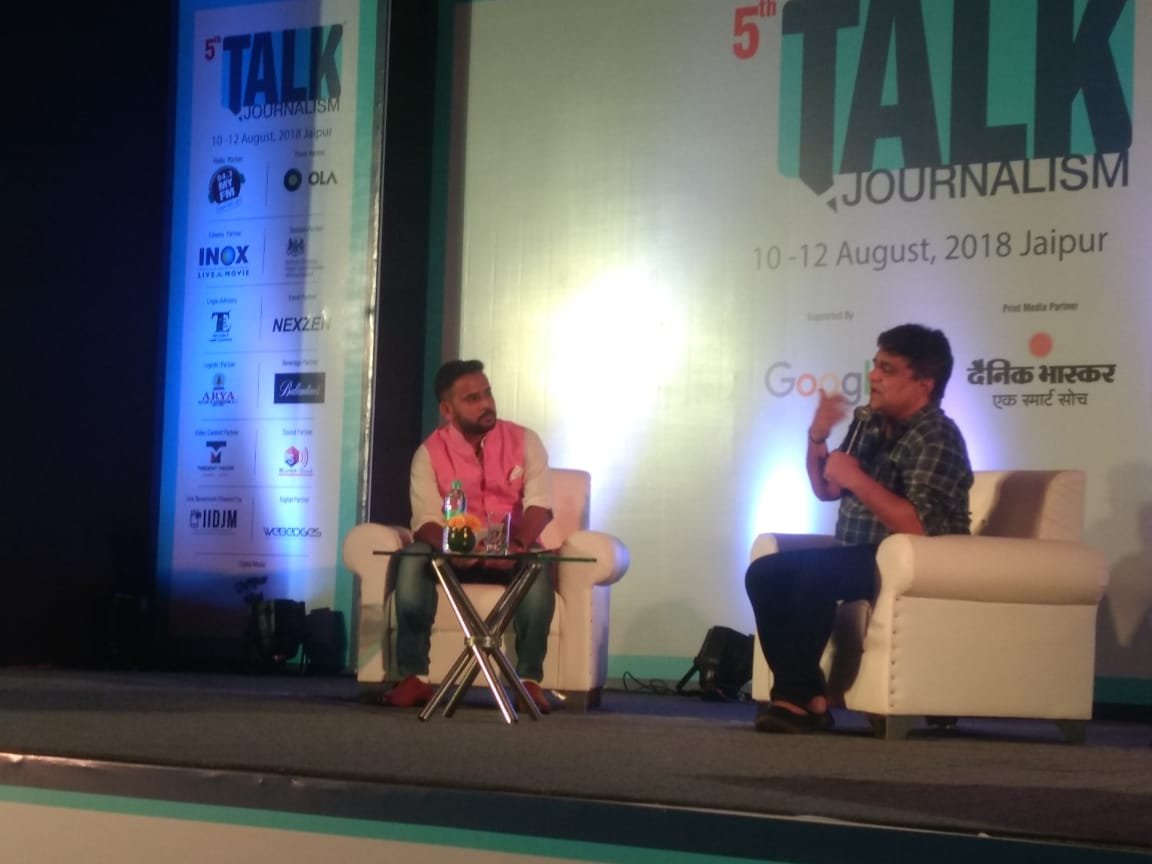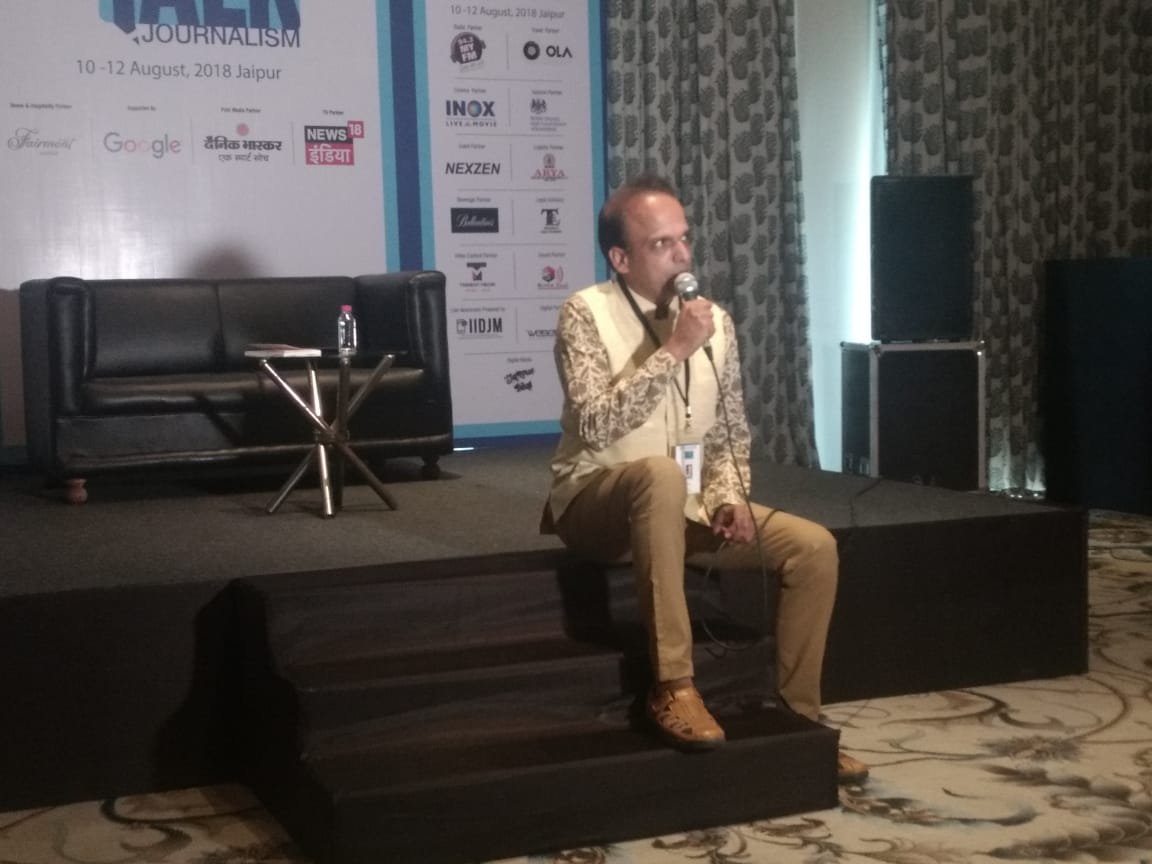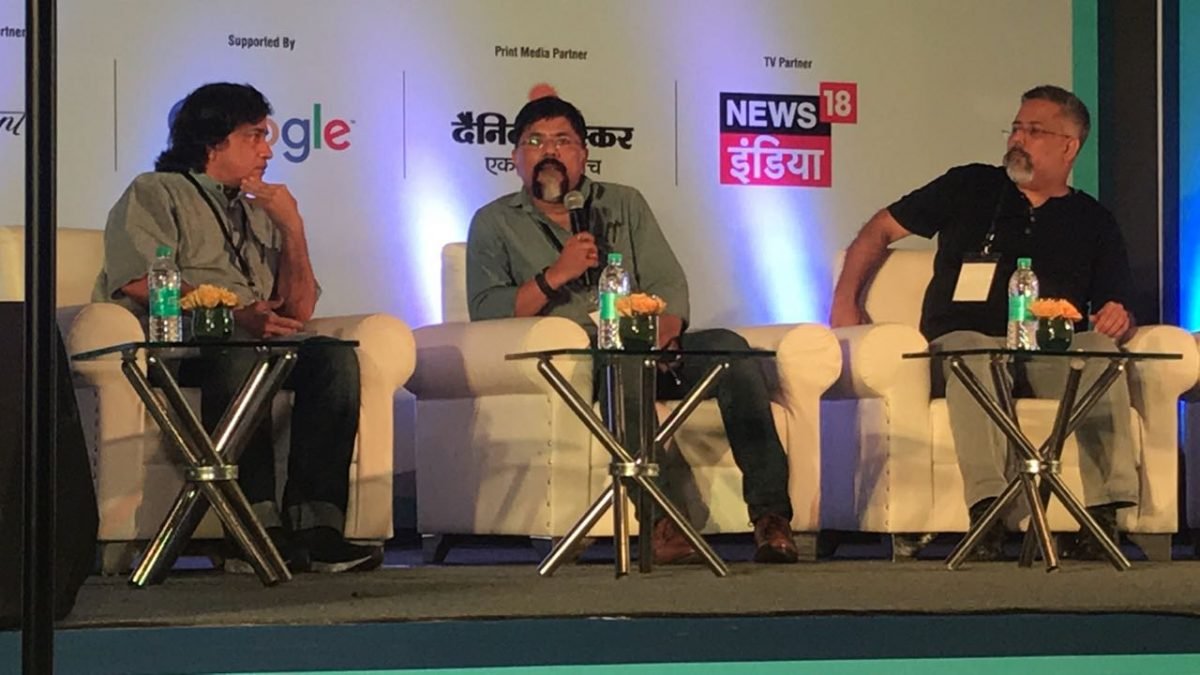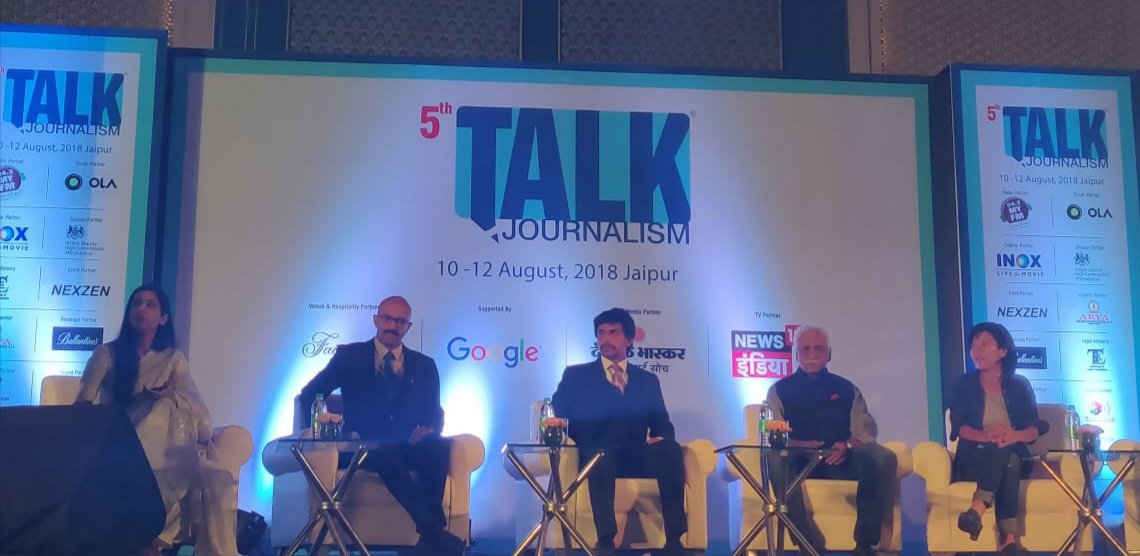Jaipur, 20 September 2019 – Being a YouTuber is something most people dream about but not everyone is able to turn this dream into reality. In order to help such dreamers, Talk Journalism invited two YouTube influencers who then provided the audience with a few guidelines to help them achieve their goals.
Prominent YouTubers, RJ Kartik and Satya Saggar conducted a session regarding “Carving Space on YouTube” at Talk Journalism 2019 on Friday. The session was initiated with the objective to enlighten the audience about YouTube content creation. In the sixth edition of Talk Journalism, light was shed on YouTube as a video sharing platform and how it can be used as a monetary source of income.
The session commenced as the host Nidhi Vadhera gave a quick introduction of YouTube as a content generation platform. RJ Kartik from 94.3 My FM started off with how he turned his radio content into video-based content. He is known for his Monday motivation videos. “I often used to share stories at my show but since the whole world was shifting towards social media, I decided to start generating the same content in video format,” said Kartik, who is one of the most followed radio personalities on social media.
A small-town boy, Satya Saggar made it big on YouTube by showcasing his passion for traveling and creating vlogs on the places he visits. He emphasized on the importance of using regional language since people easily connect with regional languages. He also spoke about the challenges he faced while he was a budding vlogger.
Upon being asked, how they felt when they crossed the benchmark of gaining a thousand subscribers, saggar said, “Instead of focusing on the figures, I always focused on creating quality content. Therefore, I didn’t even realize when I crossed the benchmark. However, I believe, it is very important to struggle before reaching this benchmark since it is the phase when you realize your mistakes and find ways to correct them.”
“Consistency in posting videos and quality content is the key to becoming a successful YouTuber. Though following deadlines is undeniably an important factor, it is your ‘Never give up’ attitude that ensures your success,” said Kartik.
The session concluded with the question and answer round.
A rapid-fire game was played between the speakers and one of the organizing committee members. The host and the speakers were interviewed individually before they took off.
Text : Gunjan Punwani and Muskaan Thakur | Copy Edit : Rupali Soni | Photo : Gunjan Punwani | Editorial Coordination: Rupali Soni & Niharika Raina


